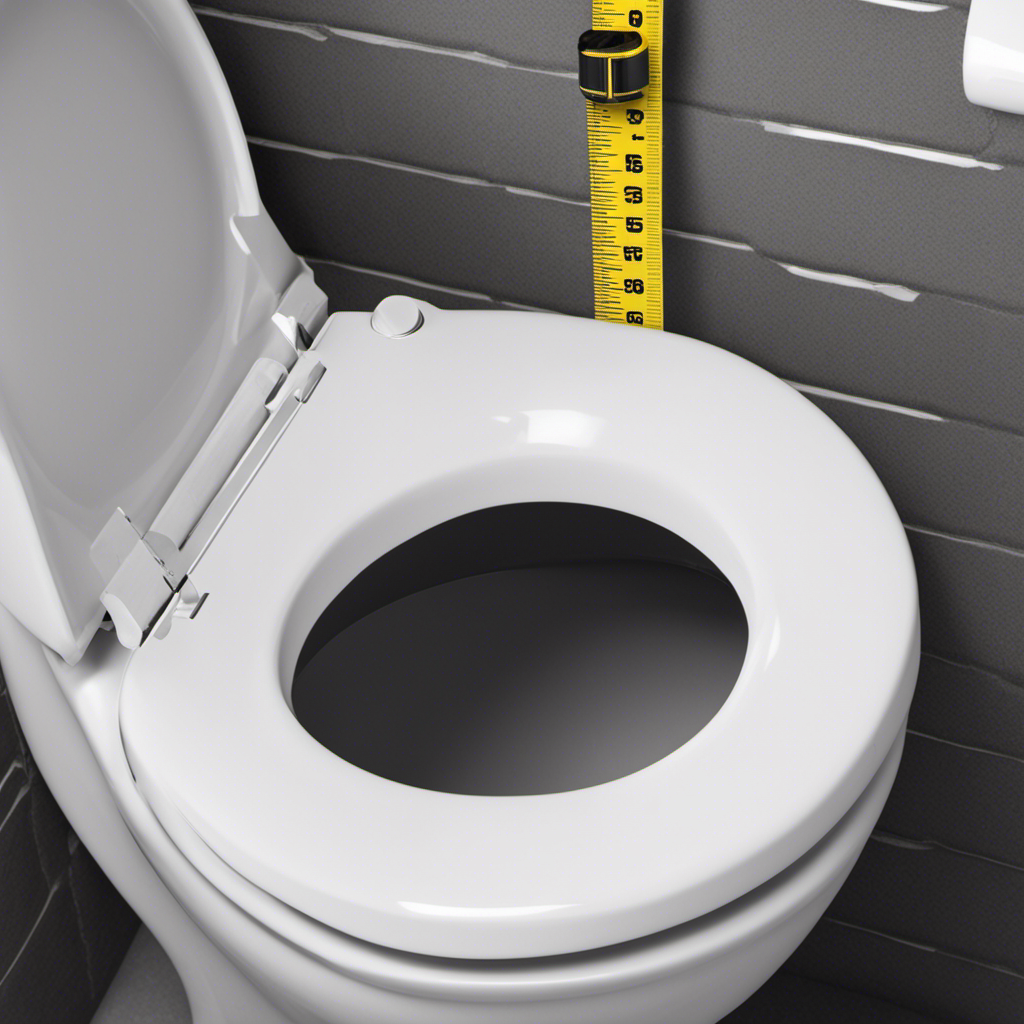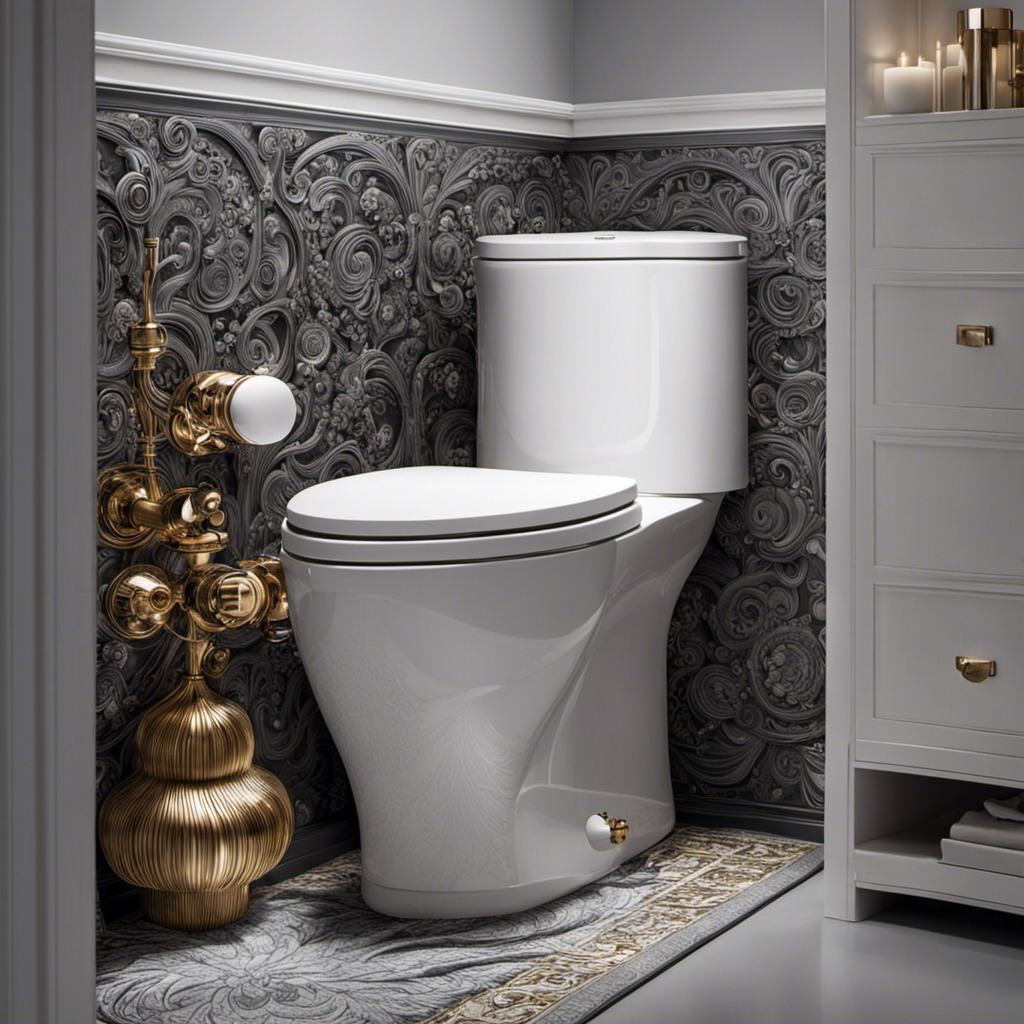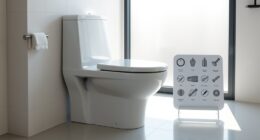As a homeowner, I recently found myself in need of replacing my toilet. It was a daunting task, but with the right measurements, I was able to ensure a perfect fit.
In this article, I will guide you through the process of measuring for toilet replacement with precision and accuracy. By determining the rough-in size, measuring the height, checking the width and depth, evaluating the flange position, and verifying the water supply measurements, you can confidently select the right toilet for your bathroom.
Key Takeaways
- Measure the distance from the wall to the center of the toilet flange to determine the rough-in size.
- Take into account the height of the toilet, including the tank, bowl rim, and seat, for comfort and suitability.
- Measure the width and depth of the toilet to ensure it fits the bathroom space and consider the weight and floor support.
- Check the flange position and assess the floor level before installation to prevent leaks or wobbling.
Determining the Rough-in Size
To determine the rough-in size, you’ll need to measure the distance from the wall to the center of the toilet flange. This measurement is crucial in determining the correct toilet size for your bathroom.
Start by locating the toilet flange, which is the pipe fitting that connects the toilet to the drain system. Use a tape measure to measure the distance from the finished wall behind the toilet to the center of the flange. This measurement is known as the rough-in distance.
Common rough-in sizes are 10 inches, 12 inches, and 14 inches. Once you have determined the rough-in size, you can then proceed to measure the toilet’s height to ensure it will fit comfortably in your bathroom space.
Measuring the Toilet’s Height
Make sure you know the height of your current toilet so you can find a suitable replacement. Measuring the toilet’s height is crucial in ensuring a proper fit and functionality. Here’s how you can do it:
- Use a tape measure to determine the distance from the floor to the top of the toilet tank.
- Measure from the floor to the top of the toilet bowl rim as well.
- Take note of the overall height of the toilet, including the seat and lid if they are attached.
Consider the weight of the toilet when comparing different styles. Wall-mounted toilets, for example, are usually lighter than floor-mounted ones.
Additionally, consider the height of the seat, as comfort is an important factor.
Checking the Width and Depth
Ensure you know the width and depth of your current toilet to find a suitable option that fits your bathroom space. To check the width, measure the distance from one side of the toilet tank to the other side. This will give you the width measurement.
For the depth, measure from the back of the toilet tank to the front edge of the bowl. This will give you the depth measurement.
Additionally, it is important to consider the weight of the toilet. Some toilets can be quite heavy, so make sure your bathroom floor can support the weight.
Lastly, measure the distance between the toilet and the nearest wall. This will help determine if there is enough clearance for installation and comfortable use.
Evaluating the Flange Position
Check if the flange position aligns with the center of the drainpipe. This ensures a proper connection with the new toilet. Evaluating the flange condition and assessing the floor level are crucial steps in determining the suitability of the existing flange for a new toilet installation.
Here’s what you need to consider:
-
Flange Condition: Inspect the flange for any cracks, corrosion, or damage that may affect its stability and performance.
-
Floor Level: Use a level to check if the floor is even and if the flange is sitting flush with the surface. Uneven floors can cause leaks or wobbling of the toilet.
If the flange is damaged or the floor level is uneven, it’s important to address these issues before installing the new toilet. Ignoring these factors may result in costly repairs or improper functioning of the toilet.
Verifying the Water Supply Measurements
Before proceeding with installation, it’s important to verify the water supply measurements to ensure a proper fit for the new toilet.
Start by turning off the water supply valve and flushing the toilet to drain the tank and bowl.
Use a measuring tape to measure the distance from the center of the flange bolts to the finished wall behind the toilet. This measurement will determine the rough-in size of the replacement toilet.
Next, check the water supply line for any leaks or damage. Inspect the shut-off valve and the flexible hose for any signs of leakage.
It’s crucial to ensure proper water flow and no leaks to prevent any future issues.
Taking these measurements and checks will ensure a smooth and successful toilet replacement.
Frequently Asked Questions
Can I Replace My Old Toilet With a Different Brand or Model?
Yes, you can replace your old toilet with a different brand or model. When choosing the right toilet brand, consider factors like water efficiency, bowl shape, and seat height. Follow toilet installation tips to ensure a proper fit.
What Are the Different Types of Toilet Designs Available in the Market?
There are two main types of toilet designs available in the market: one piece toilets and two piece toilets. One piece toilets have a seamless design, while two piece toilets have a separate tank and bowl.
How Do I Know if I Need to Replace the Toilet Wax Ring During Installation?
I can tell if I need to replace the toilet wax ring during installation by checking for signs of wear and damage. Common signs include water leakage, unpleasant odors, and instability of the toilet.
Are There Any Specific Tools Required for Toilet Replacement?
Toilet measurement techniques involve using a measuring tape to determine the rough-in size and the distance from the wall to the center of the drain. Common mistakes to avoid when measuring for toilet replacement include not accounting for baseboard trim or uneven floors.
Is It Necessary to Hire a Professional Plumber for Toilet Replacement, or Can I Do It Myself?
I can tackle DIY toilet replacement, but hiring a pro has its pros and cons. It depends on your comfort level, experience, and the complexity of the job. Consider the risks and benefits before deciding.
Conclusion
In conclusion, measuring for a toilet replacement requires careful attention to detail and accurate measurements. By determining the rough-in size, measuring the toilet’s height, checking the width and depth, evaluating the flange position, and verifying the water supply measurements, you can ensure a successful toilet replacement.
Interestingly, according to a survey conducted by plumbing experts, approximately 60% of homeowners incorrectly measure their rough-in size, leading to compatibility issues with new toilets. Therefore, it is crucial to follow the proper measurement guidelines to avoid any complications during the replacement process.










